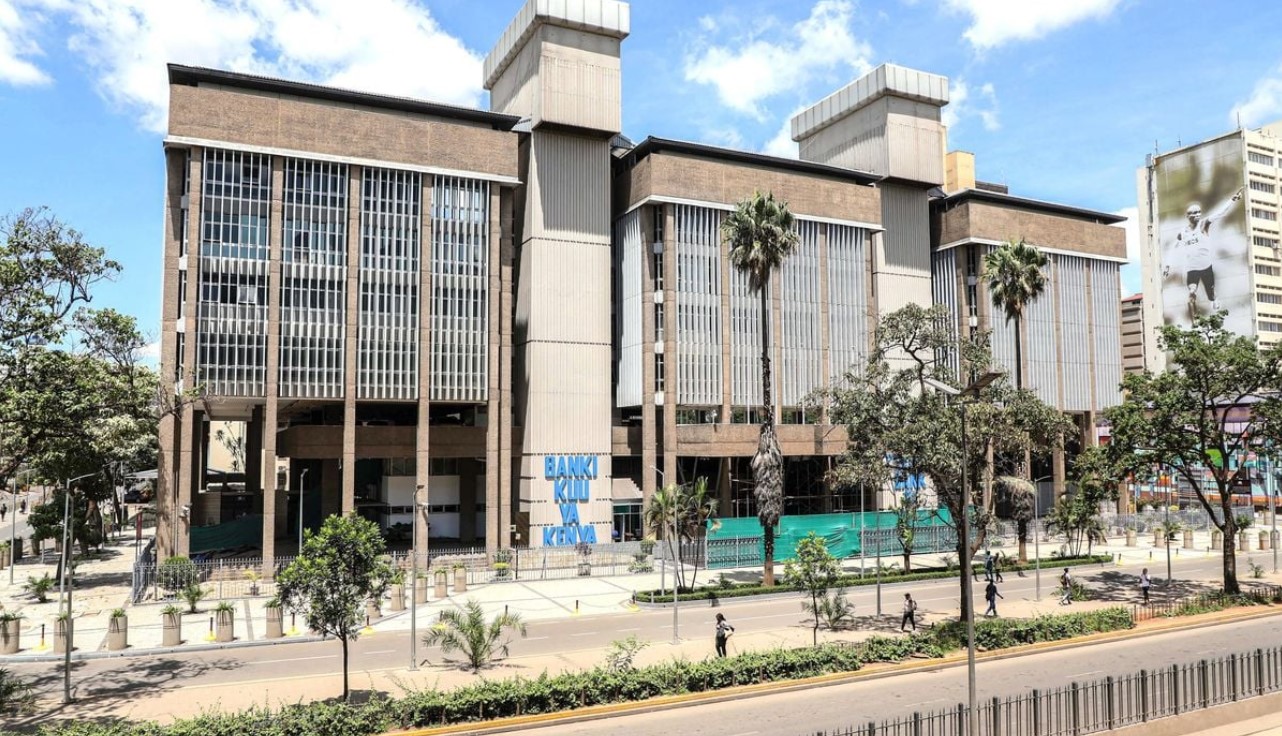CBK cuts lending rate to 9.75 per cent as inflation eases

According to CBK, Kenya’s overall inflation dropped to 3.8 per cent in May 2025, down from 4.1 per cent in April, remaining below the mid-point of the official 2.5 to 7.5 per cent target band.
The Central Bank of Kenya (CBK) has cut its benchmark interest rate by 25 basis points, bringing the Central Bank Rate (CBR) down to 9.75 per cent from 10 per cent, citing falling inflation, a stable exchange rate and improved macroeconomic conditions as key drivers of the decision.
In a statement following its latest Monetary Policy Committee (MPC) meeting, the CBK said the move was intended to further support private sector credit growth and stimulate economic activity, while ensuring that inflation remains anchored within the target range and the exchange rate remains stable.
More To Read
- Loan defaults surged to 17 per cent in 2024 due to tough business climate - CBK
- Kenya’s mobile money agents drop by 4.8 per cent as customers go fully digital
- CBK cuts lending rate to 9.5 per cent in seventh straight easing move
- More women turn to digital loans as smartphone use spurs financial inclusion
- 11 banks fined for exceeding lending limits, failing capital requirements
- Kenyan shilling holds steady at 129 against the dollar for a year
“The Committee concluded that there was scope for a further easing of the monetary policy stance to augment the previous policy actions aimed at stimulating lending by banks to the private sector and supporting economic activity,” CBK Governor Kamau Thugge said.
According to CBK, Kenya’s overall inflation dropped to 3.8 per cent in May 2025, down from 4.1 per cent in April, remaining below the mid-point of the official 2.5 to 7.5 per cent target band.
Non-core inflation also fell to 6.0 per cent from 8.4 per cent, largely due to lower food and electricity prices. However, core inflation edged up slightly to 2.8 per cent, driven by higher prices of processed food items.
The CBK said it expects inflation to stay low in the near term, supported by stable food and energy prices and a firm exchange rate.
CBK also noted that private sector credit growth recovered to 2.0 per cent in May 2025, up from 0.4 per cent in April and a contraction of -2.9 per cent in January. The rebound is linked to falling interest rates and the strengthening of the Shilling, which reduced the valuation of foreign currency-denominated loans.
Commercial bank lending rates fell to 15.4 per cent in May, compared to 15.7 per cent in April and 17.2 per cent in November 2024.
Kenya’s current account deficit narrowed to 1.8 per cent of GDP in the year to April 2025, from 2.2 per cent the year before. CBK said the improvement was supported by higher exports, particularly horticulture and coffee, alongside a 12.1 per cent jump in diaspora remittances and a 12.0 per cent increase in service receipts from transport and travel.
Goods imports rose by 7.6 per cent, mostly due to higher intermediate and capital goods imports. However, CBK said the current account remained more than fully financed by financial inflows, resulting in a USD 2.1 billion balance of payments surplus.
CBK projects the deficit to remain stable at 1.5 per cent of GDP in 2025, with another expected surplus and reserve accumulation of USD 1.1 billion.
CBK reaffirmed that the banking sector remains sound, with robust liquidity and capital buffers. However, non-performing loans rose slightly to 17.6 per cent in April 2025 from 17.2 per cent in February. Defaults increased mainly in the trade, household, tourism, and construction sectors. It, however, noted that banks continue to make adequate provisions against credit risk.
May 2025 business and market perception surveys show sustained optimism over Kenya’s economic outlook. Respondents cited favourable weather, improving agricultural output, and declining interest rates. Nonetheless, concerns remain over subdued consumer demand, high operational costs, and global instability.
The MPC noted that global growth is projected to slow to 2.8 per cent in 2025 from 3.3 per cent in 2024, due to weaker outlooks in the US and China, trade tensions, and geopolitical risks, especially in the Middle East and Eastern Europe.
Global headline inflation has eased but remains sticky, with central banks adopting a cautious approach to policy easing. Oil prices have moderated, though risks of renewed volatility persist. Food inflation has declined, driven by falling cereal and sugar prices, but edible oil prices remain high.
Top Stories Today














































